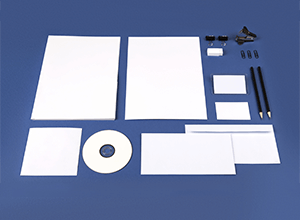 It is incredibly ironic that achieving simplicity can be one of the hardest principles of design to master, or at least achieving it successfully.
It is incredibly ironic that achieving simplicity can be one of the hardest principles of design to master, or at least achieving it successfully.
For many people the first step when trying to achieve simplicity is to remove things or just leave them out in the first place. At least on face value simplicity is just that – simple, uncomplicated and straightforward. However, the art in simplicity is managing to still produce the same outcomes and convey the same meaning but in a more streamlined and appealing way.
Don’t let your message get lost in the simplification process; here are some tips to get you started.
Know who, what and why
Get the basics down first. Who is the material aimed at? What do you want it to say? Why do you want it to say that?
Simplicity doesn’t just eliminate aspects – it’s all about eliminating what is not essential. Once you know whom you are targeting you can eliminate what is not important to them. For example, marketing material aimed at senior citizens may require very different information than the same service marketed at teenagers.
In the same way, understanding what you want to say will determine the overall design of the material. Take the very core message of the piece and concentrate on that. Everything else is just complicated and takes emphasis away from the central message you are trying to convey.
Run with one
One piece of material = one message. Until you’re a master of simplicity, stick to this equation and save yourself a bunch of headaches. Working with just one idea will help keep things simple from the get go. Furthermore, one idea for you also means one idea for your audience and you don’t run the risk of overwhelming them with too much unnecessary information.
Stick to one simple call to action per design. This is all about what you are trying to get your audience to do. If you want customers to sign up to a mailing list then run with that, if you want them to check out your Facebook then provide the link. Don’t flood them with multiple calls to action and risk losing them altogether.
Give it some time
Simplicity takes time, interaction and understanding. Properly grasping what is important and at the very core of any message can’t be rushed or forced.
It is human nature to put more in and pack material full of ideas. When you think about it, it’s not hard to realise why. You are excited, you’re on a roll, you know what is important and you want to make sure it’s all in there for your customers. It is only once you are removed from the creation process that you can gain an outsider’s perspective and clarity regarding the material.
Chances are the initial design is overstocked with material – sleep on the idea, get a cup of coffee or move on to something else for the time being. Your final product will be the better for it.
Be consistent
Once your brand is established, the greatest form of simplicity may be consistency. Consider Nike and the swoosh symbol, McDonalds and the golden arches or Apple and the white apple logo: rarely are the brand names ever represented without their simplistic corresponding designs. Consistency within your branding and design process will create customer awareness, familiarity and loyalty.
It’s important to remember simplicity takes time and don’t panic if at first you find it difficult to nail down any one idea. It’s difficult to find your niche when you are new to the industry but keeping these basic principles in mind from the beginning will help your business get off on the right track.
Pop into your local Kwik Kopy today for further advice on the design process for your business.

